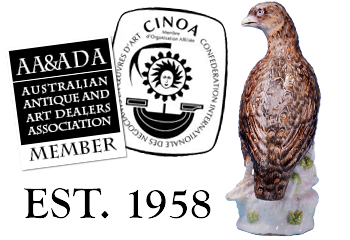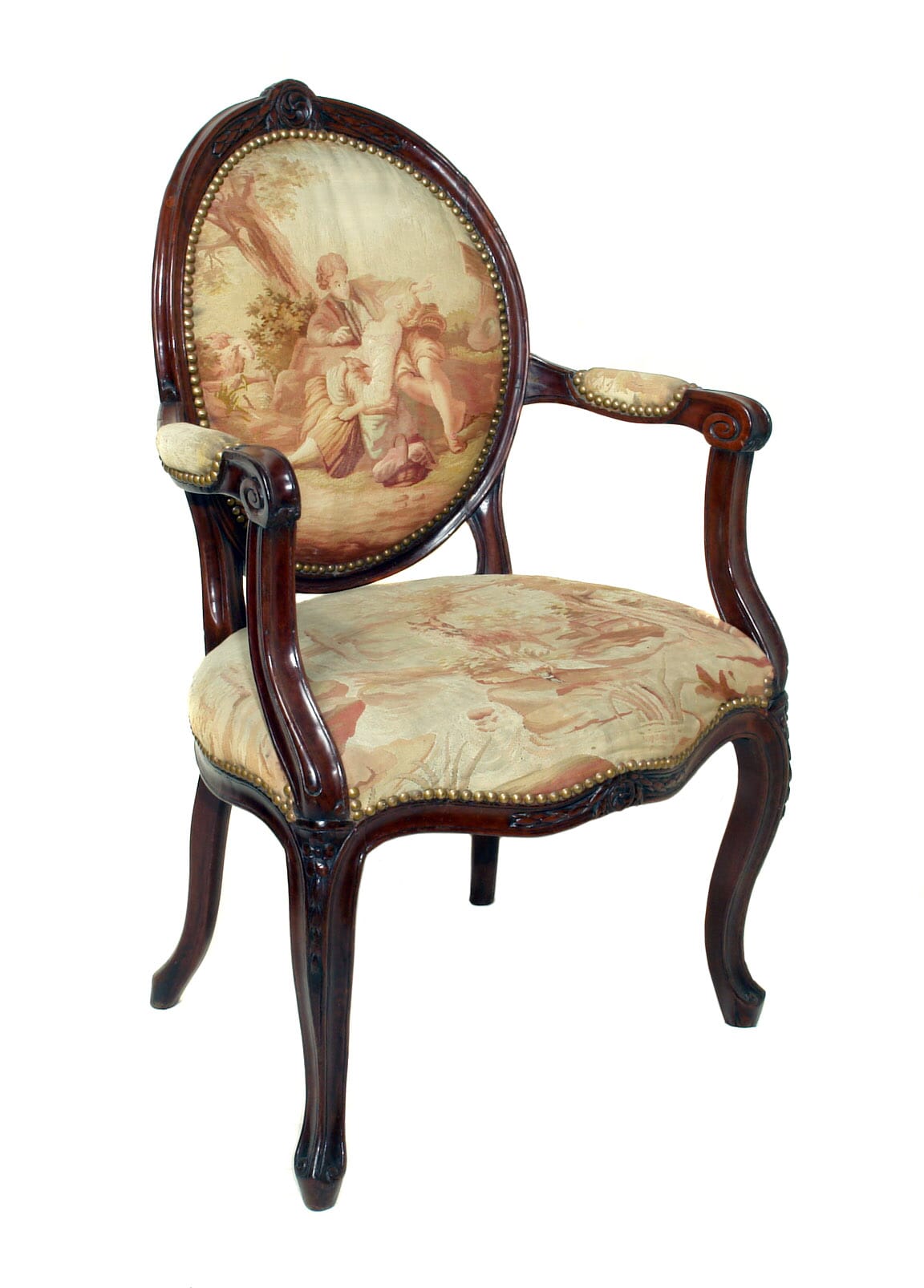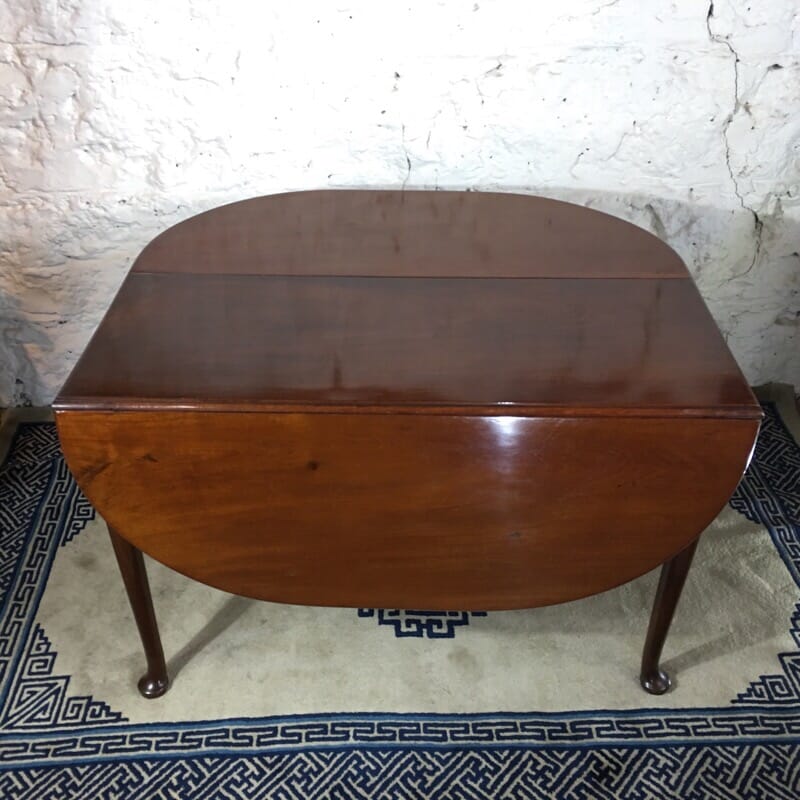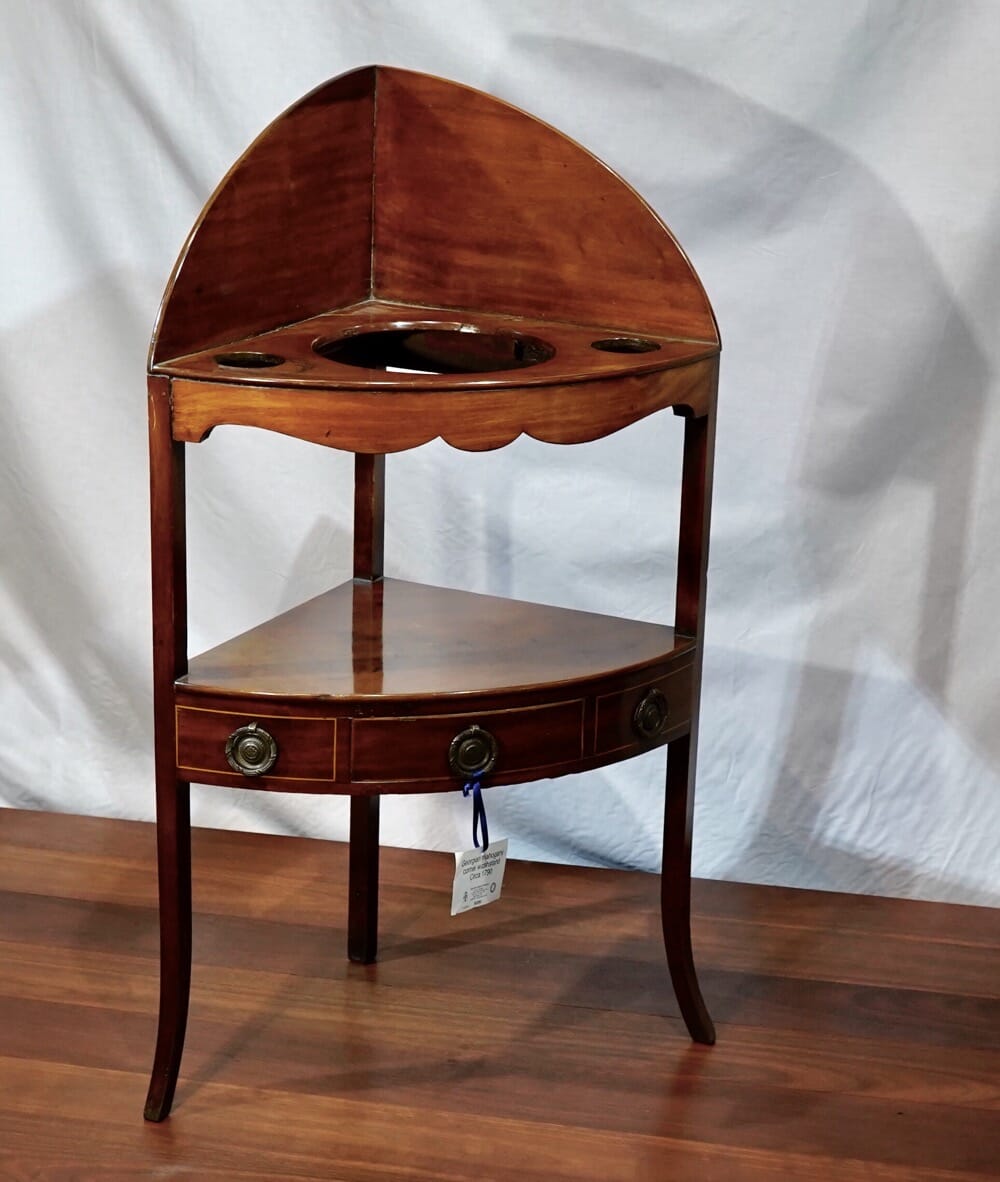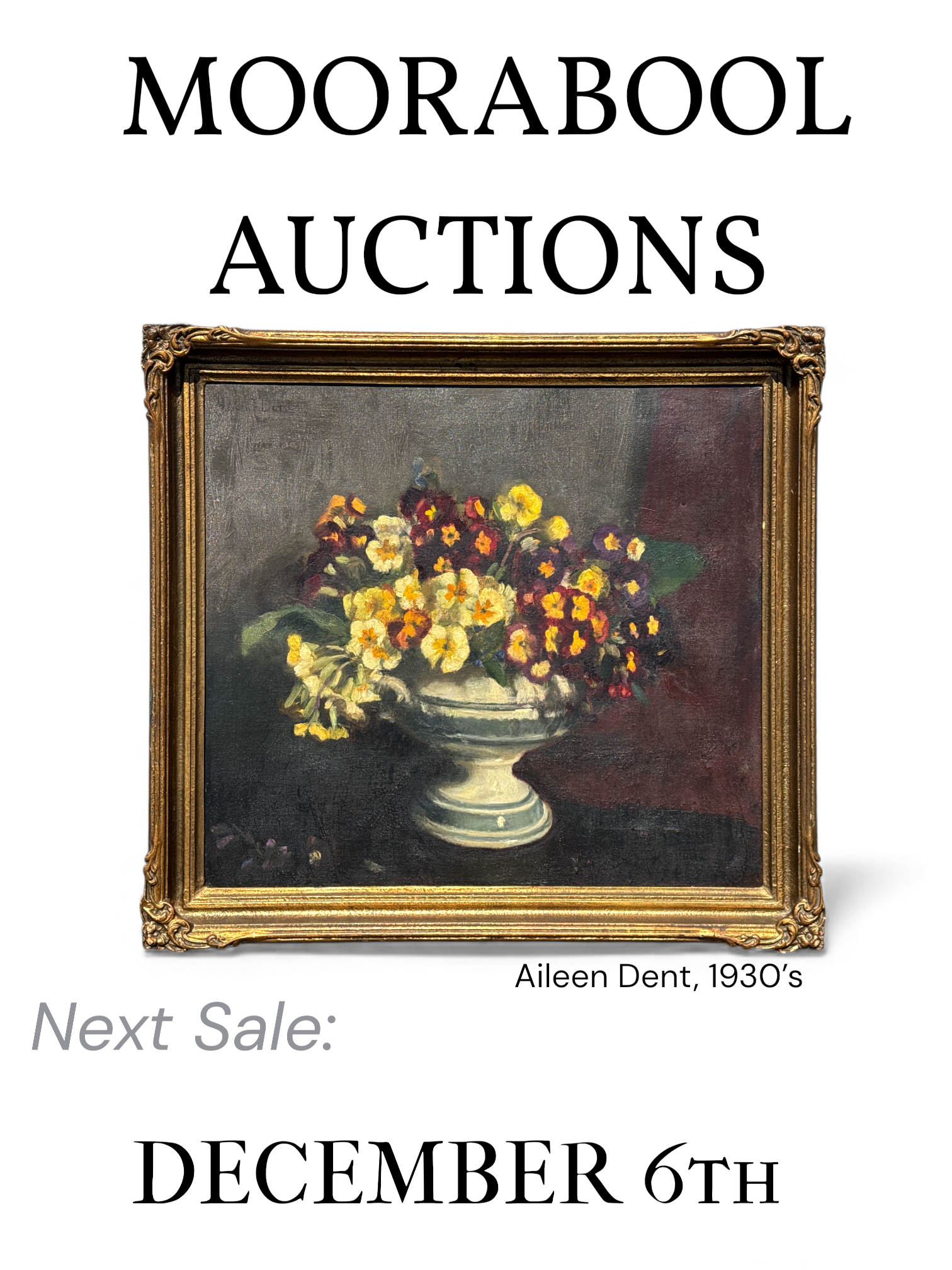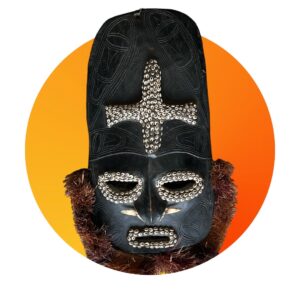Chinese hardwood ‘Nanguanmaoyi’ arm chair in the Ming style, Qing 18th-19th c.
$850.00 AUD
Chinese hardwood arm chair, the back rail with central raised segment in the ‘Nanguanmaoyi’ ( ‘Southern Official’s Hat Chair’ ) manner of the Ming Dynasty, the arms carved as stylised ‘cloud’ scrolls, the back spat with a fine shallow-carved lotus flower above a blank feature panel, the legs with footrest & stretchers.
Qing Dynasrty,
18th-19th century.
Provenance: old Melbourne collection
55.5cm wide, 42cm deep,
87.5cm high
Condition: good, some old repairs & loose joints; both arms with hole to back joint indicating strengthening with a screw or nail; back right leg with replacement lower section apron. 10cm; surface has a reddish surface that is rubbed off on most of the wood, mostly remaining on the base. Displays well and is perfectly usable.
This elegant chair style is known as ‘nanguanmaoyi’ , or “Southern-official hat chair”, named due to the square back with central raised part, visually similar to an official’s hat. They became a celebrated form of Ming Dynasty furniture. As a subset of ‘yokeback’ armchairs, nanguanmaoyi were widely admired during the Ming period for their refined aesthetic and structural ingenuity.
The defining characteristic of these chairs is their seamless design: the top and side rails flow uninterrupted into the arms and legs. This continuity is achieved through a sophisticated woodworking technique known as the right-angle pipe joint, which allows for clean, flowing lines. In this example, the arms take the form of ‘xiangyun’ , stylised auspicious clouds.
The distinctive design, featuring continuous back and arm rails, is believed to have originated in the Ming dynasty, likely influenced by traditional bamboo furniture construction. Bamboo chairs relied on flexible bamboo stalks, bent and secured with natural fibers, to achieve a similar uninterrupted form.
From an English perspective, the design is familiar, as this aesthetic was borrowed by the early Georgian furniture builders, no doubt influenced by examples of Chinese furniture that came from China as trade goods. The classic ‘Chippendale’ style has its roots firmly placed in chairs like this example.
For further insights, refer to Robert D. Jacobsen and Nicholas Grindley’s Classical Chinese Furniture in the Minneapolis Institute of Arts (Minneapolis, 1999, pl. 9), which details comparable examples. Another similar piece is illustrated in Robert H. Ellsworth’s Chinese Furniture (New York, 1970, pl. 6).
| Condition | |
|---|---|
| Size | |
| References |
In stock
